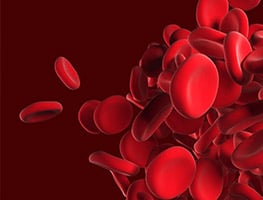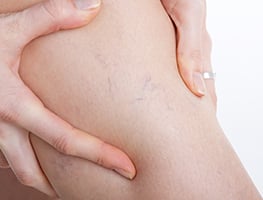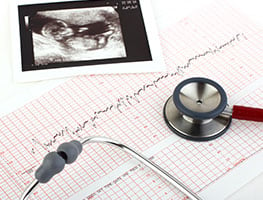What Causes Cholestasis?
Bile salts normally flow from the gallbladder where they are stored in readiness to be expelled into the digestive tract. During pregnancy, high levels of hormones interrupt this process so that the bile salts then build up in the liver and spill over into the bloodstream. Instead of being directed to the gut they then become deposited under the skin. Intense skin itching is the predominant sign of this condition.
Cholestasis is more common in
-
Women who have a history of liver disease
-
Women who have a medical history of developing gall stones
-
Multiple pregnancies
-
Women who have a family history of their mother or sisters having cholestasis
-
Women who have a history of itchy skin (pruritis) when taking the oral contraceptive pill
Symptoms of Cholestasis
-
Skin itching, which can become very severe, particularly during the third trimester or during late pregnancy. The itch, which is not associated with a rash, can also spread to the limb extremities e.g. the arms and legs, and can also affect the trunk.
-
Intense itching on the palms of the hands and the soles of the feet.
-
Dark coloured urine due to the excretion of bile salts.
-
Mood swings, feeling down and depressed, especially if driven to distraction by itching.
-
Insomnia and changes in sleep patterns.
-
A change to the colour of the bowel motions so they begin to appear pale. This is due to the undigested fat which is being excreted in the mother’s stools, a condition known as steatorrhoea.
-
Mild jaundice (yellow eyes and skin).
How is Cholestasis Diagnosed?
Blood tests determine the level of bile in the blood stream and how the liver is functioning. If the liver function tests are abnormal and the level of bile is higher than within a normal range, then this combined with a thorough physical and medical history helps to inform the diagnosis.
Treatment of Cholestasis
Treatment depends on the extent of the cholestasis and how each individual mother is tolerating her symptoms. If the itching is extreme and causing problems with sleeping, then treatment may be considered. If the itching is bearable and not impacting on maternal comfort too much, then a watch and wait approach is generally warranted.
The other fact to consider is that treatment is designed to prevent pregnancy complications. Potentially, cholestasis can be lethal to an unborn baby which is why monitoring it is so important. Mothers with cholestasis can be reassured that their symptoms usually resolve within a few days after delivery. Knowing this and staying upbeat helps many women to maintain a positive attitude, even if they are uncomfortable due to their skin being so itchy.
Other Treatment Options Include:
-
Topical creams, which are applied to the skin to stop itching. These may be steroid-based and one can choose from a range of lotions, bath soaks, creams or emollients.
-
Cool baths and showers; some women find relief by using ice in their baths. Dressing only in cotton and natural fibres can also provide relief and reduce rash aggravation. Keeping fingernails short and well cut helps to reduce the likelihood of additional skin trauma.
-
Ursodeoxycholic Acid treatment is one medication option. It works by decreasing the concentration of bile salts and also helps to reduce the itching and improve liver function.
-
Vitamin K supplements in the form of tablets are prescribed to assist with normal blood clotting.
-
A mother with cholestasis will often be induced at 37-38 weeks of her pregnancy to reduce the incidence of later stage complications. This decision is weighed up carefully by looking at the cost versus benefits ratio. Babies who are born preterm are at risk of developing a range of complications, particularly relating to the maturity of their lungs. If there are concerns, then steroid medication is given to the mother, which helps with lung maturation.
-
Antihistamines may be prescribed for the mother to help her with itch control.
Management of Cholestasis
-
Close monitoring of the mother and her baby is essential.
-
Regular blood tests are frequently ordered to determine liver function and bile concentration.
-
Foetal monitoring and recording may be attended. This is to ensure that the baby is not becoming stressed by the higher levels of bile salts in the mother’s bloodstream.
-
Planning may be made for a caesarean section delivery of the baby.
-
Occasionally a mother will have an ultrasound to determine that there is no underlying liver disease or gallstones. If present, these may exhibit similar symptoms to cholestasis.
-
Mothers with cholestasis may be referred to a specialist obstetric physician who specialises in liver disease during pregnancy.
-
If the bile salt level exceeds a certain point, or the liver function is becoming compromised, then admission to hospital for monitoring may become necessary.
-
Continuous foetal monitoring may be necessary during labour.
Complications of Cholestasis
Unborn babies cannot cope with their mother’s elevated levels of bile salts. It is important that they are included in pre-term surveillance and monitored to see how they are managing.
-
Some mothers become jaundiced with a yellow discolouration to their skin and the whites of their eyes. This is not a common symptom though.
-
The lower levels of vitamin K can lead to blood clotting problems, increasing the chances of a mother and/or her baby bleeding. For this reason, mothers may be given additional doses of vitamin K either before her delivery or after the baby is born.
-
Increased risk of foetal distress, premature delivery or stillbirth.
-
There is an increased risk of developing cholestasis in future pregnancies if it has already occurred. Some sources claim the risk is as high as 70% of it recurring.
Outcome after Having Cholestasis
For the vast majority of women, there are no on-going liver or health effects from having had cholestasis. Generally the itch settles with a few days after birth though all symptoms should disappear within four weeks post-partum. It is important for all mothers who have been diagnosed with cholestasis to have a thorough check-up after their baby is born. This is to ensure that there is no underlying liver disease.














